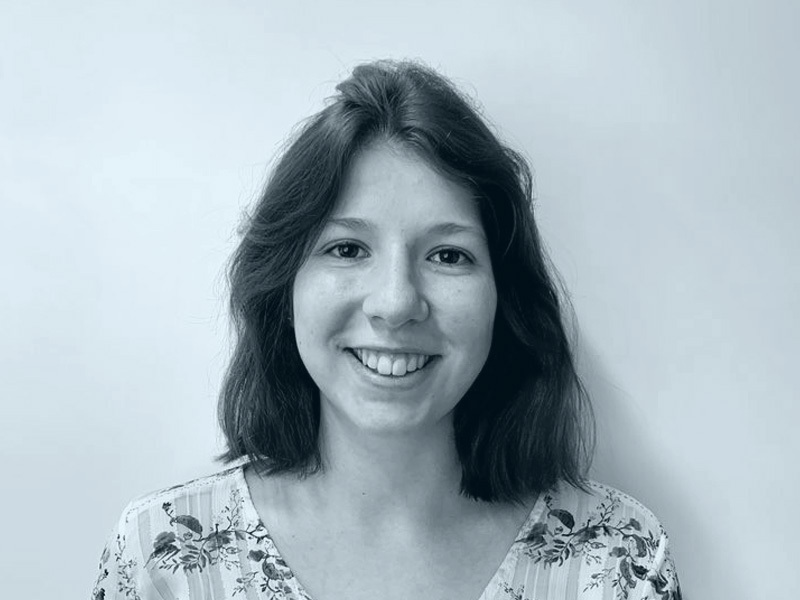I came to Gladwell Academy in February 2022 as a marketing intern. I knew the industry Gladwell was operating in, so I expected to be working in the same Agile environment as the company advertises. Even though I briefly learned about the topic of Agile techniques and methodologies during my university studies, it was completely different from what I saw at Gladwell Academy. That's why I made a list of points that impressed me the most.
Agile Working: A Personal Experience

Hello, my name is Yulia Lubestka, and this is my story of working in an Agile environment.

1. Team Divisions
The Agile methodology implies cross-functionality across teams. That’s why at Gladwell Academy, there are two operating models: teams and squads. Teams are formed based on the common role which the group members possess. These roles can be marketing, sales, coordination, etc. In turn, squads include people from different teams and different departments. In the case of Gladwell Academy, each squad was responsible for the market they are working in (i.e. Benelux, DACH, France, etc.) For instance, I was a part of the marketing team, which included several of my colleagues who were responsible for different aspects of the company’s marketing. I was also part of the innovation squad, which included the CEO, the marketing director, several individuals from the coordination department, and the HR manager. This multitude of disciplines within the squads enables deeper conversation and consideration of the problem or idea at hand.
2. Work Planning
The planning of work done within an Agile company is particularly interesting and incomparable to anything I have ever seen before. Every three months, Gladwell Academy gathers at the PI Planning event to plan the objectives for the next iteration. In other words, they sit down together with all the squads and teams, and they plan their work for the next three months. It is ideal to have everyone from the company physically present at the location to enable easy and quick communication between the teams and individuals. However, as this was not always possible, Gladwell was quick to arrange a hybrid PI Planning set-up. PI Plannings at Gladwell Academy are two days of intense brainstorming and planning within each squad. The squads come up with the goals they are ready to commit to, after which they prioritize and grade them. As the planning continues, it is important for each team member to plan their responsibilities and tasks around the squad goals. The tasks are then divided per sprint (which lasts two weeks). The Agile methodology is changing not only the way how project management is done, but also the mindset of the people working in the Agile organization.
3. Agile Rituals
Working in an Agile squad and working in an Agile company are completely different things. It is so, because of the increased number of people that have to be aligned. When I was in university, I worked Agile while doing a project with a team of around 10 of my classmates. In comparison, Gladwell Academy has more than 40 employees, and all of them have to effectively collaborate and communicate with each other, which makes the process more complicated and requires additional effort to ensure productivity. That’s why there are a number of Agile rituals and ceremonies that accompany this way of working.
For example, every morning, I had a 15-minute daily stand-up scheduled with my team. The goal of this meeting was to meet with my marketing colleagues and discuss the progress each of us has made, as well as share any news, updates, risks, and impediments we’ve encountered. It is important to be open and honest during this meeting, both about successes and learnings. The team can then offer their help in task prioritization, finalization, and responsibilities division. The Agile mindset promotes collaboration to achieve a common goal, and the team stand-ups exist to align and share the successes or impediments in a safe, judgment-free space.
Besides the stand-ups, the company has recurrent biweekly demos. The idea behind the demo is similar to that of the stand-up: to show the progress made during a sprint, the finished PI objectives, talk about the news from each team and squad, and share the advancements made in one sprint. The difference between demo meetings and stand-ups is that demos are organized for the whole company, rather than just for one team or squad.
Another ceremony worth mentioning is the PI retrospective. Before the PI event, each team reviews the previous PI’s collaboration and the way everything went. This is a chance for colleagues to exchange their thoughts on the things they liked or didn’t like during the last PI, as well as a chance to offer ideas on how to modify certain processes within a team in order to facilitate growth and improvement.
4. Open Communication
The Agile way of working is about openness, feedback, asking questions, and asking for help. People who work in an Agile environment are very open, which made my internship at Gladwell Academy incredibly pleasant. I constantly felt the support of my colleagues, who were ready to provide me with detailed answers to the question I had, as well as offering me their extensive support whenever I needed it. What also stood out to me was that even outside of working hours, my colleagues would initiate conversations about topics outside of work, go out to dinner together, or go on a company trip. An Agile mindset makes colleagues closer and friendlier to one another. The employees of a company like Gladwell Academy are motivated to come to work, to deliver quality results to the organization, to develop themselves both personally and professionally, and to grow within their roles.
5. Hybrid Working
This last part is my personal favorite. One of the foundations of Agile is flexibility and freedom to choose where your working space is on any given day. Gladwell Academy gave me that freedom, so I was coming to the office 2-3 times a week, and the rest of my work was conducted from home. From what I noticed in my behavior, it was much easier for me to concentrate on work if I was not required to wake up early and travel to the office 5 days in a row. On top of that, hybrid working brings about a healthy work/life balance, since people are not spending a major part of their lives within the office walls (or commuting for hours a day to and from work). Instead, they can stay at home or in another environment where they feel comfortable, spending more time with family, and maintaining their health and wellness.
The Agile methodology is changing not only the way how project management is done, but also the mindset of the people working in the Agile organization.
Wrapping Things Up
As a person who experienced Agile working firsthand, I can vouch for the fact that I became happier doing office work. The company which adopts an Agile approach gives its employees the freedom to choose how and where they want to plan their working day. The Agile workers do not have to deal with so much pressure, as in traditional companies, due to the fact that Agile focuses heavily on team responsibility and ownership. Subsequently, it reduces the level of stress the individuals are experiencing at work. Another thing that helped me a lot was dividing my work into sprints. Doing so helped me adequately evaluate the amount of work that has to be done in one sprint and my capacity for it. Dividing a project into smaller pieces maintained motivation and productivity for me.
I was lucky to work at Gladwell Academy, because the company is specialized in Agile transformations, and my adaptation process went much easier due to the Agile training provided to me as an employee. I believe that every company should teach about their new employees their organizational culture and approach to working, no matter what kind of culture and approach is there.
So, if you are asking me what it’s like working Agile, I would say it’s fun, productive, exciting, flexible, and sustainable for the company in times of crisis. Agile breaks down the borders and gives companies and their employees a world of opportunities. Employees are enabled to work from different corners of the planet, and companies are able to hire the professionals they are looking for, regardless of where they’re located.
